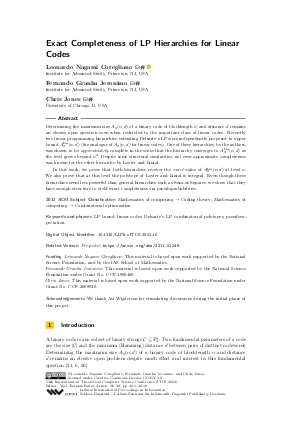LIPIcs.ITCS.2023.40.pdf
- Filesize: 0.73 MB
- 18 pages

 Creative Commons Attribution 4.0 International license
Creative Commons Attribution 4.0 International license








Feedback for Dagstuhl Publishing